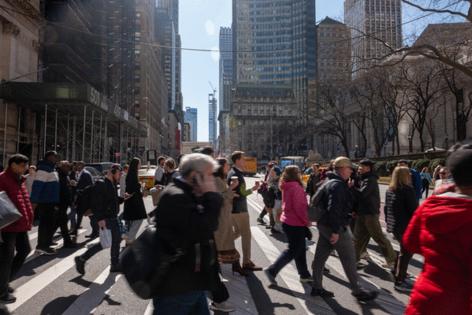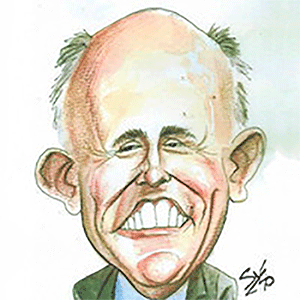US population set to shrink by 2033 without immigration, CBO says
Published in Business News
Without immigration, the U.S. population would begin to shrink in 2033, undermining the nation’s economic growth, the Congressional Budget Office said on Thursday — bringing forward its estimate for that threshold by seven years.
Annual deaths are projected to exceed the number of births in the U.S. just eight years from now, at which point net immigration would drive population growth, according to the CBO’s long-term budget outlook report. Last year, the CBO estimated the U.S. population would begin to shrink in 2040.
The projection showcases the risk of imposing draconian immigration policies at a time when the Trump administration has been implementing sweeping actions to curb the inflow of non-native-born people. Measures have included restricting deportation protections and sharply tightening border security. Border crossings in February were 94% lower than they were a year prior, according to U.S. Customs and Border Protection data.
The CBO didn’t incorporate any of President Donald Trump’s policies in the Thursday report, as its projections were completed based on policy and economic developments before he took office.
Net immigration would “increase the size of the overall population in coming years and boost the share of people in age groups that have higher rates of labor force participation,” the CBO said in its outlook.
GDP outlook
The latest projections by the nonpartisan arm of Congress also underscored the likelihood of weaker economic growth in coming decades.
Gross domestic product is forecast to increase at an average rate of 1.6% over the next 30 years, compared with the 2.5% average increase over the last three decades, the report said. The slowdown is due to both a weaker pace of expansion in the labor force — as the population ages and increases more modestly in coming decades — and less robust productivity gains.
The labor force is seen expanding to 185 million in 2055 from 171 million in 2025. By the final decade of the projection period, labor-force growth is forecast at just 0.1% a year, a fraction of the average 0.8% rate seen over the past three decades.
These forecasts are subject to particular uncertainty, the CBO said. “Compounded over many years, even small changes in rates of net immigration, fertility, or mortality could greatly affect outcomes later in the projection period.”
Fiscal crisis
Meantime, despite all the current fervor over the application of artificial intelligence, the CBO is projecting weaker productivity gains over coming decades. That’s in part due to slower investment because of a crowding-out effect from massive public-sector borrowing.
“Increased federal borrowing is projected to reduce the resources available for private investment,” the CBO said. Declines in federal investment relative to GDP are also seen as a drag on so-called total factor productivity — a term to describe efficiency gains.
Another damper is “a slowdown in the pace at which workers’ educational attainment increases,” the report said.
The CBO’s projections reprised its previous warnings about the federal government heading into uncharted territory in terms of its debt burden. Debt held by the public is seen swelling to 156% of GDP in 2055 from 100% this year.
For now, the risk of a fiscal crisis “appears to be low,” but it’s not possible to reliably quantify the danger, the CBO said.
“In the agency’s assessment, no tipping point can be identified at which the debt-to-GDP ratio would become so high that it would make a crisis likely or imminent,” the report said. “Nor is there a specific tipping point beyond which interest costs would become so high in relation to GDP that they were unsustainable.”
_____
©2025 Bloomberg News. Visit at bloomberg.com. Distributed by Tribune Content Agency, LLC.












Comments